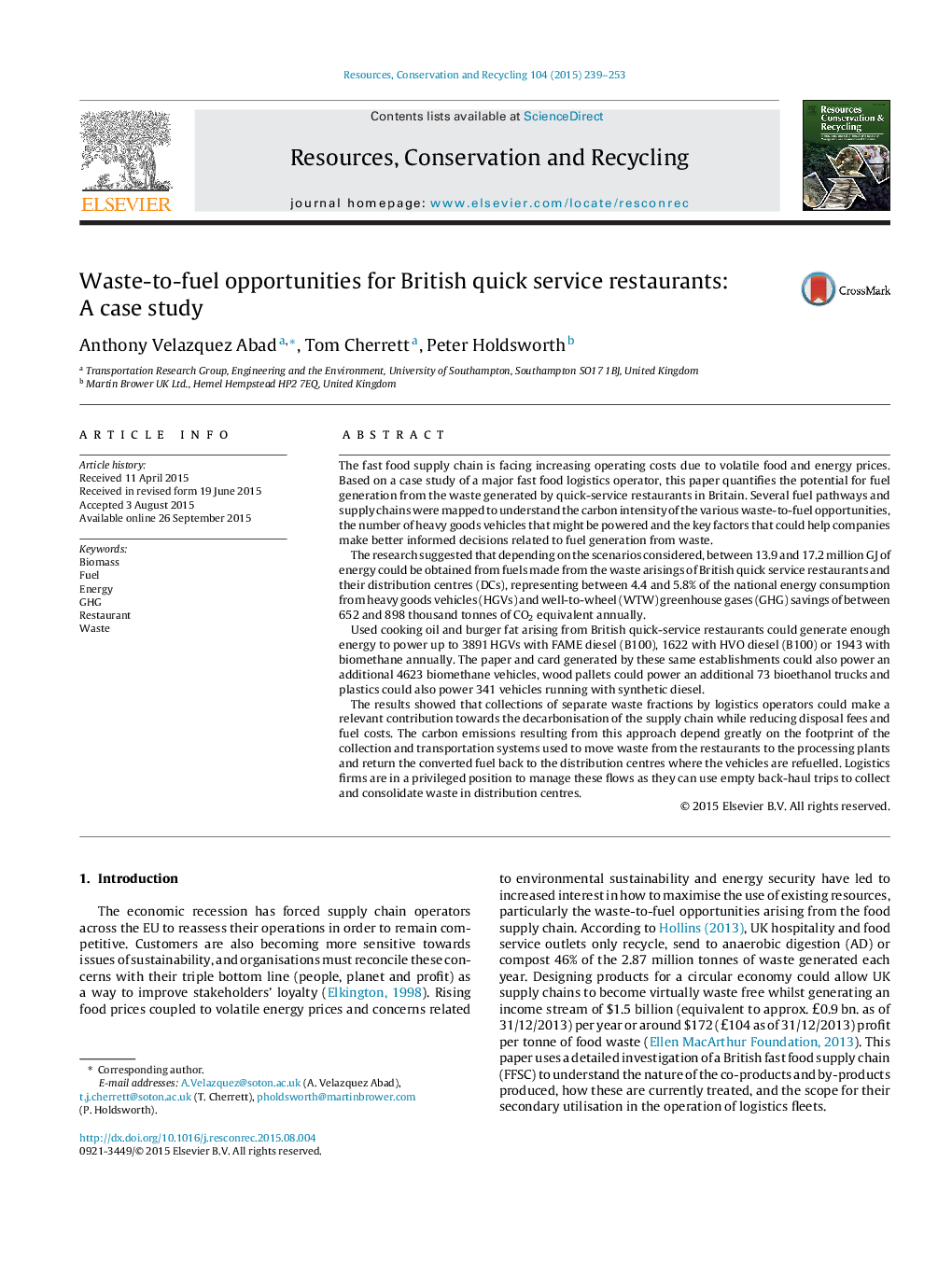| کد مقاله | کد نشریه | سال انتشار | مقاله انگلیسی | نسخه تمام متن |
|---|---|---|---|---|
| 1062826 | 948179 | 2015 | 15 صفحه PDF | دانلود رایگان |
• Main waste streams in a fast food supply chain are quantified.
• Waste-to-fuel production potential and well-to-tank greenhouse gas emissions for several pathways are calculated.
• British quick service restaurant waste streams could power up to 8928 lorries/year, depending on waste-to-fuel routes and powertrain technologies.
• Waste collection carbon emissions can be minimised using delivery vehicles’ backhauling trips.
• Policy implications of Euro 6 Emission Standard and UK renewable energy incentives are identified.
The fast food supply chain is facing increasing operating costs due to volatile food and energy prices. Based on a case study of a major fast food logistics operator, this paper quantifies the potential for fuel generation from the waste generated by quick-service restaurants in Britain. Several fuel pathways and supply chains were mapped to understand the carbon intensity of the various waste-to-fuel opportunities, the number of heavy goods vehicles that might be powered and the key factors that could help companies make better informed decisions related to fuel generation from waste.The research suggested that depending on the scenarios considered, between 13.9 and 17.2 million GJ of energy could be obtained from fuels made from the waste arisings of British quick service restaurants and their distribution centres (DCs), representing between 4.4 and 5.8% of the national energy consumption from heavy goods vehicles (HGVs) and well-to-wheel (WTW) greenhouse gases (GHG) savings of between 652 and 898 thousand tonnes of CO2 equivalent annually.Used cooking oil and burger fat arising from British quick-service restaurants could generate enough energy to power up to 3891 HGVs with FAME diesel (B100), 1622 with HVO diesel (B100) or 1943 with biomethane annually. The paper and card generated by these same establishments could also power an additional 4623 biomethane vehicles, wood pallets could power an additional 73 bioethanol trucks and plastics could also power 341 vehicles running with synthetic diesel.The results showed that collections of separate waste fractions by logistics operators could make a relevant contribution towards the decarbonisation of the supply chain while reducing disposal fees and fuel costs. The carbon emissions resulting from this approach depend greatly on the footprint of the collection and transportation systems used to move waste from the restaurants to the processing plants and return the converted fuel back to the distribution centres where the vehicles are refuelled. Logistics firms are in a privileged position to manage these flows as they can use empty back-haul trips to collect and consolidate waste in distribution centres.
Journal: Resources, Conservation and Recycling - Volume 104, Part A, November 2015, Pages 239–253
